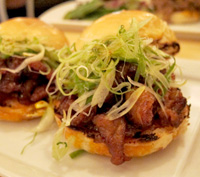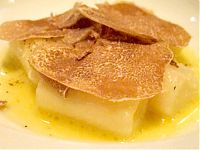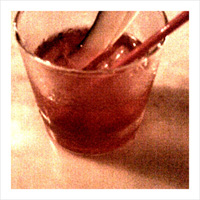Georgia on My Mind
by Everett Hutt
June 16, 2009
When I was invited to a Georgian dinner and wine-tasting with friends, like most Americans would, I assumed I would be feasting on a bounty of home-style Southern American food. The wines, I supposed, would be from some small wineries in the state, like those popping up all over the US in places that have not traditionally made wine.
In fact, I was not far off in terms of eating traditional, local food and drinking wine from small unknown wineries. But I was thousands of miles off geographically, as my friends were referring to Georgia, the country, located in the Caucuses, next to Russia and Turkey.
The impetus for the dinner was that my friends had collected some bottles of Georgian wines through their various travels in Eastern Europe. When one of them came across a Georgian recipe online (when searching for new ways to cook mushrooms), he got the idea to do a country-themed dinner.
The mushroom genesis was in fact the only disappointing dish of the evening. Soko arazhanit is lightly sautéed mushrooms cooked in a cream sauce with cinnamon and other spices. While this makes the mushroom very tender, I found the cream and cinnamon flavors too heavy handed.
The main dish, chicken baza, was essentially a roast chicken with herb-walnut sauce. While it imparted a nice flavor, the star dish was the chicken’s accompaniment, lobio, a cold bean salad. I am not normally a fan of kidney beans, but this preparation, with lots of onions and herbs including parsley, coriander, and tarragon, was delicious. It requires at least one day of preparation as you have to soak the beans for 12 hours and cook them twice, but it was well worth the effort. It is light and refreshing, almost Lebanese in its flavorings.
For the wine, we tasted three different wines all made from the same grape: Saperavi. I have never heard of the grape, let alone tasted it. It is very hard to generalize about a grape after only three wines, but I found it generally to make big, tannic, slightly alcoholic wines. The flavor profiles I most associate it with are Malbec or Syrah (Shiraz).
As for the wines themselves, they were at best mediocre and at worst awful. The 2005 Saperavi from Teliani Valley was by far the best. It had a pleasant nose of blackcurrant, which carried through when tasted. Slightly too tannic, it nonetheless lingered in the mouth nicely. The 2005 Saperavi from Tamada tasted alcoholic. There were some hints of dried leaves and pepper on the palate, which disappeared quickly. The 2004 Mukuzani Saperavi from Marini was just awful. It was probably past its prime, but even so it was clearly an over-extracted wine with tastes of shriveled prunes. My friends tell me that you can purchase these wines in much of Eastern Europe for around $7 a bottle. Online, I found some references for about $15 a bottle in Europe.
But criticizing the wines misses the point. The dinner was a complete success as it allowed us to explore a cuisine and viniculture that we did not know. I am already planning with these friends to try a similar dinner with food and wine from yet another country. And I advise all of you as well to pick a country, find some recipes, and buy the local wine or alcohol. It can make for a fun, unexpected evening.



















